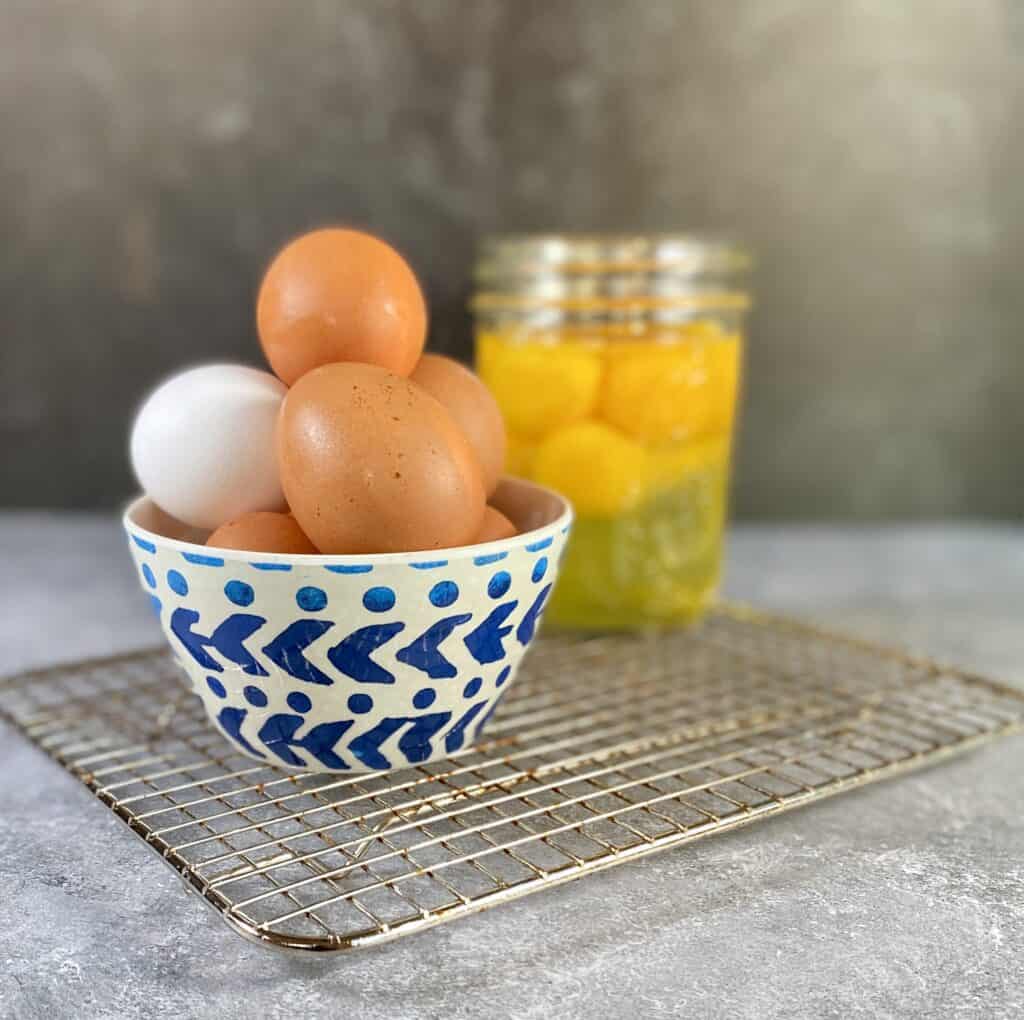Today, in our Ingredient Series, we’re taking on eggs! We’ve already talked about flour, sugar, butter, yeast, baking powder, and baking soda, so it’s time that the humble egg has its day.
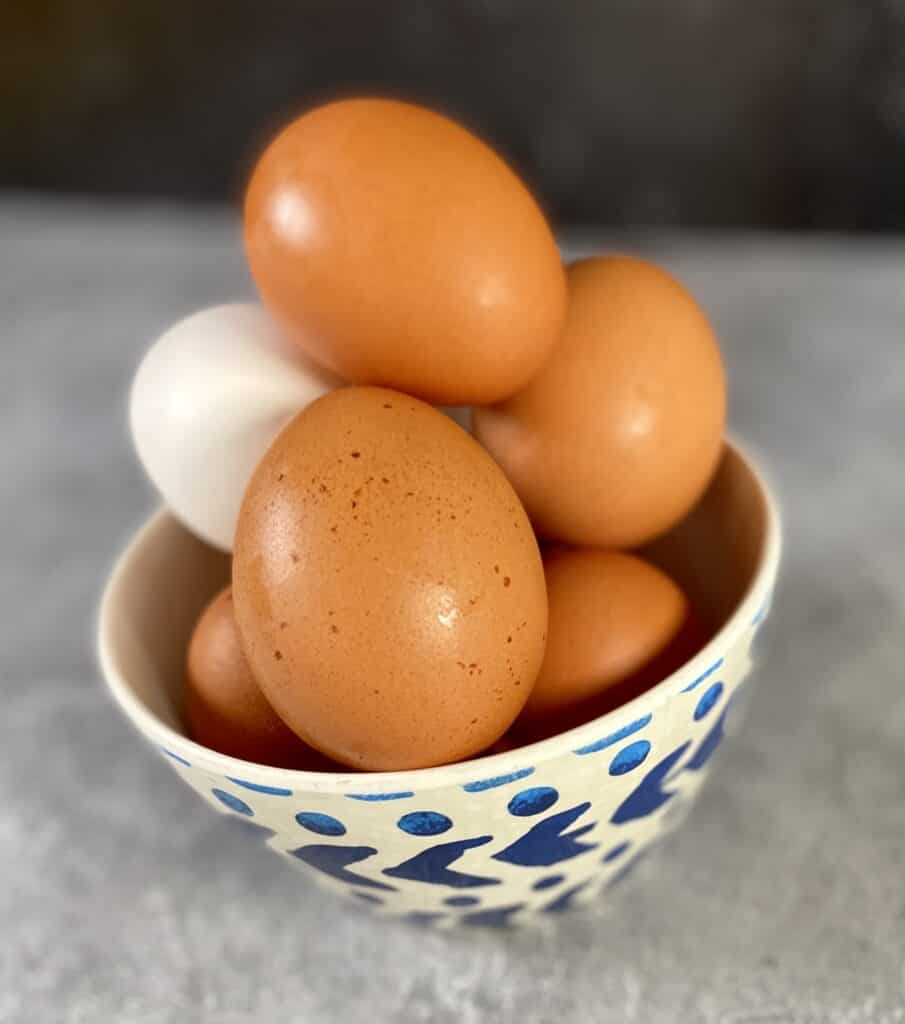
Not to be dramatic (????), but eggs are transformative. When combined with flour, they add to the structure and texture of cakes, cookies, and breads. Egg wash is the secret ingredient for beautifully caramelized pie crusts and challah; it can even be used as a kind of edible glue for slivered almonds or sesame seeds.
Eggs can also be reduced to their parts: fatty egg yolks are a natural emulsifier that give a rich, luscious and creamy texture to lemon curds, while egg whites can morph into a natural leavening agent when whipped to stiff peaks.
Let’s get started, shall we?
In this Post:
- The Composition of Eggs
- The Default Egg for Baking (With a Cheat Code!)
- The Impact of Eggs on Structure
- The Impact of Eggs on Color
- Conclusion
The Composition of Eggs
Eggs are composed of two seemingly inconsistent parts: the egg yolk and the egg white.


The egg white is made of a tangled network of protein. Protein is the literal building block for baked goods, in that it creates the physical structure for leavening (e.g., baking powder, baking soda, or yeast) to do its work. The combination of structure and leavening is what gives baked goods their rise. The more eggs that are added, the stronger the physical protein bonds will be.
While the yolk also contains some protein, it’s more famous for its fattiness. Egg yolks give a smooth, velvety texture to whatever they’re added to, whether it’s a cake batter or my favorite luscious lemon curd from Bakes by Brown Sugar. The egg yolk is also known for adding beautiful color, both on the interior and exterior of your baked goods.
The Default Egg for Baking (With a Cheat Code!)
When I was first learning to bake, I truly believed that my baking endeavor had to come to a full stop if I didn’t have large chicken eggs. Like, I would give up and save the baking for another day if I only had medium or extra-large eggs in the house.
You see, large chicken eggs are the gold standard for baking recipes. They are so commonly used for baking that many recipe authors don’t specify the size and type of eggs to be used in a recipe. They simply say: two eggs.
Translation: two large chicken eggs, or ~114 grams of eggs.
Friend, if you don’t have large chicken eggs in your home, please don’t fret. If you have chicken eggs and a food scale, you’ll be perfectly fine.
To measure eggs using a food scale, simply crack a little more than you need, scramble gently, and remove the excess once it’s just starting to combine. You don’t want perfectly scrambled eggs here. You want slightly combined; the objective is to try and maintain the white/yolk ratio in your batter or dough.
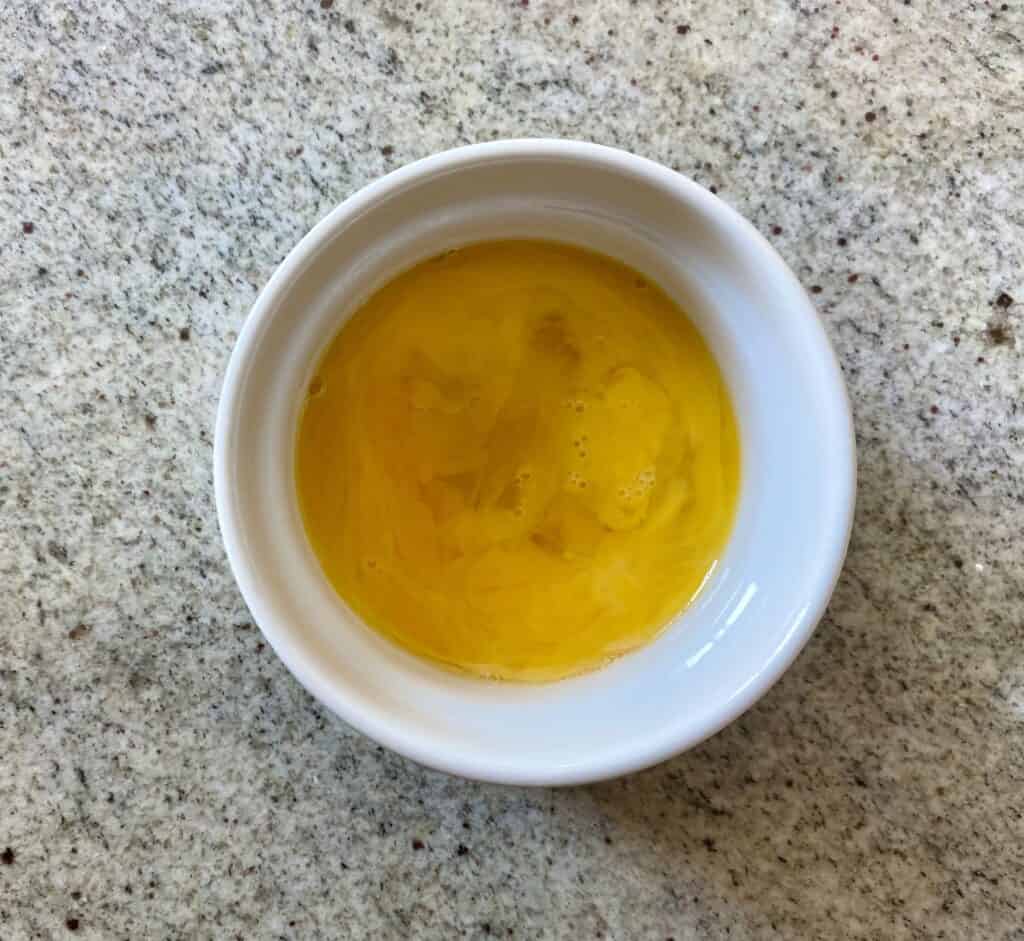
For example, if your recipe calls for two large eggs (~114 grams) and you only have medium eggs, crack three medium eggs (about 150 grams) and scramble gently. Remove the excess grams of egg and you’re good to go!
The Impact of Eggs on Structure
In my post about flour, I talked about how flour creates the structure for cakes, cookies, muffins, and all manner of baked goods. The protein percentage of your flour impacts the strength of that structure (higher protein content=stronger structure=more chew).
Both egg whites and yolks contain protein. When eggs and flour are combined in a recipe, the egg adds an additional protein layer to the flour and creates a stronger gluten network that traps more gases from your leavening and gives your baked goods even more lift!
Egg whites can play dual roles in the texture your baked goods! Have you ever tried whipping egg whites to stiff peaks? The reason that that happens is because the whipping action actually separates the proteins from one another, reducing the strength of the protein network in the egg white and transforming it into pockets of air that can be used for leavening. That’s why, when egg whites are overbeaten, they crumple and become useless. It’s because the proteins have separated from one one another and expanded until they’ve popped.



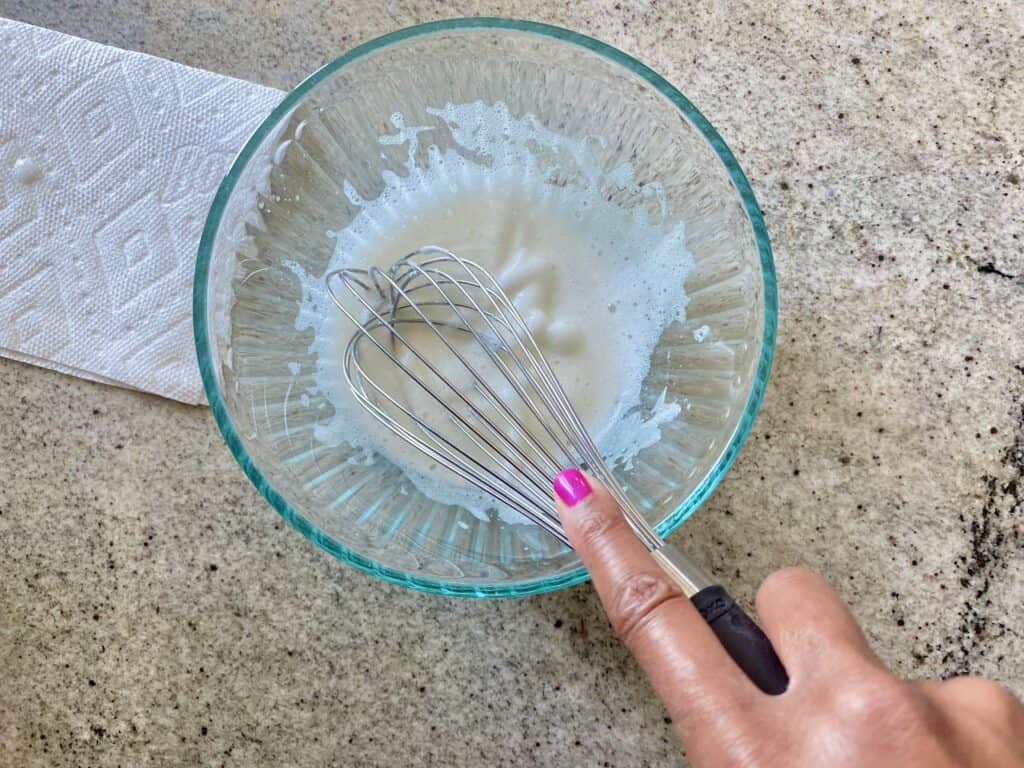




Eggs can also thicken desserts like custards. It’s amazing really. When heated, the proteins in the egg whites coagulate (bind) into a gel-like structure to help create a cohesive custard instead of a milky mess when heated. That velvety mouth feel comes from the fatty yolks.
I personally love the glazed texture that an amazing egg wash gives to baked goods. Like this!
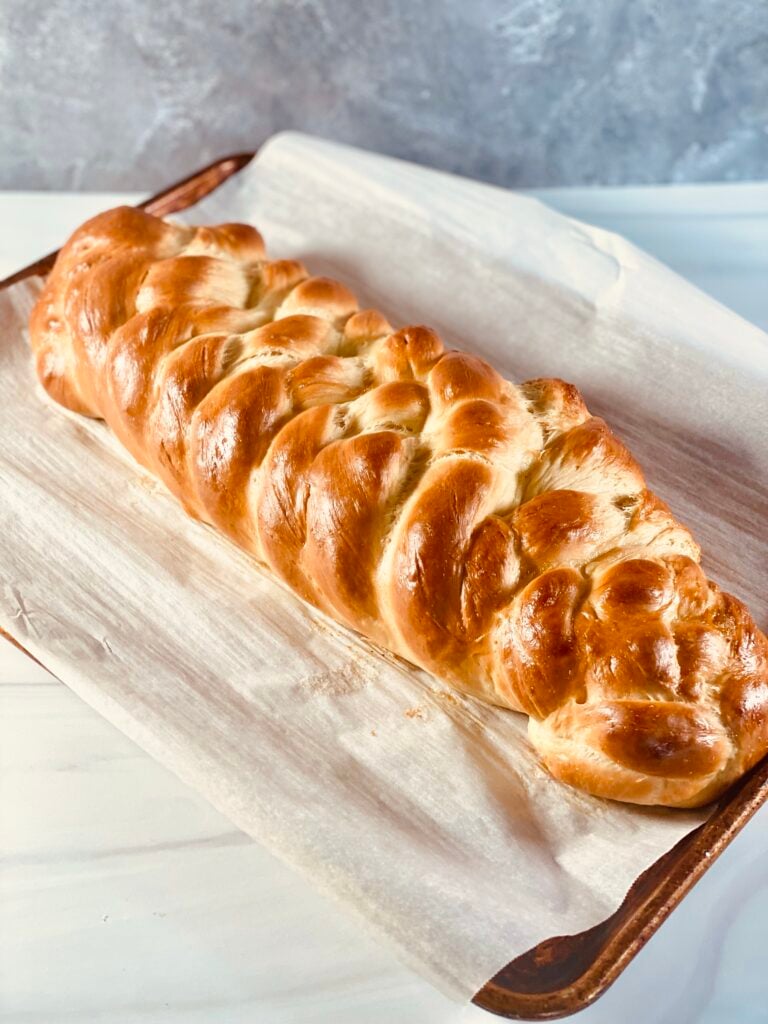
That sheen? That’s from scrambling a whole egg and a teaspoon of water and brushing it across the entire challah before baking. The egg promotes both the beautiful browning and a glazed texture to the finished product.
The Impact of Eggs on Color
Both parts of the egg contribute to color in your baked goods. The egg white helps cakes (in particular angel food cake and white cake) retain their characteristic white color. Egg whites are also used in Swiss and Italian meringue buttercream recipes and they help those buttercreams retain their beautiful, glossy white color.
The yolk, on the other hand, does double duty. The fatty yolk helps contribute to the Maillard reaction (that’s just a fancy word for browning) on the top of your baked goods, and also adds to the beautiful, slightly yellow color that we’ve come to see in sliced yellow cake and pound cake, and also in all manner of cookies. Additionally, the yolks add color and fatty decadence to French buttercream recipes.
I clearly need to work on a buttercream tutorial. ::adds to list::
Conclusion
When it comes to baking, every ingredient plays an important role. Understanding the properties of each ingredient and the role that they play in your baked goods will help you become a better baker.
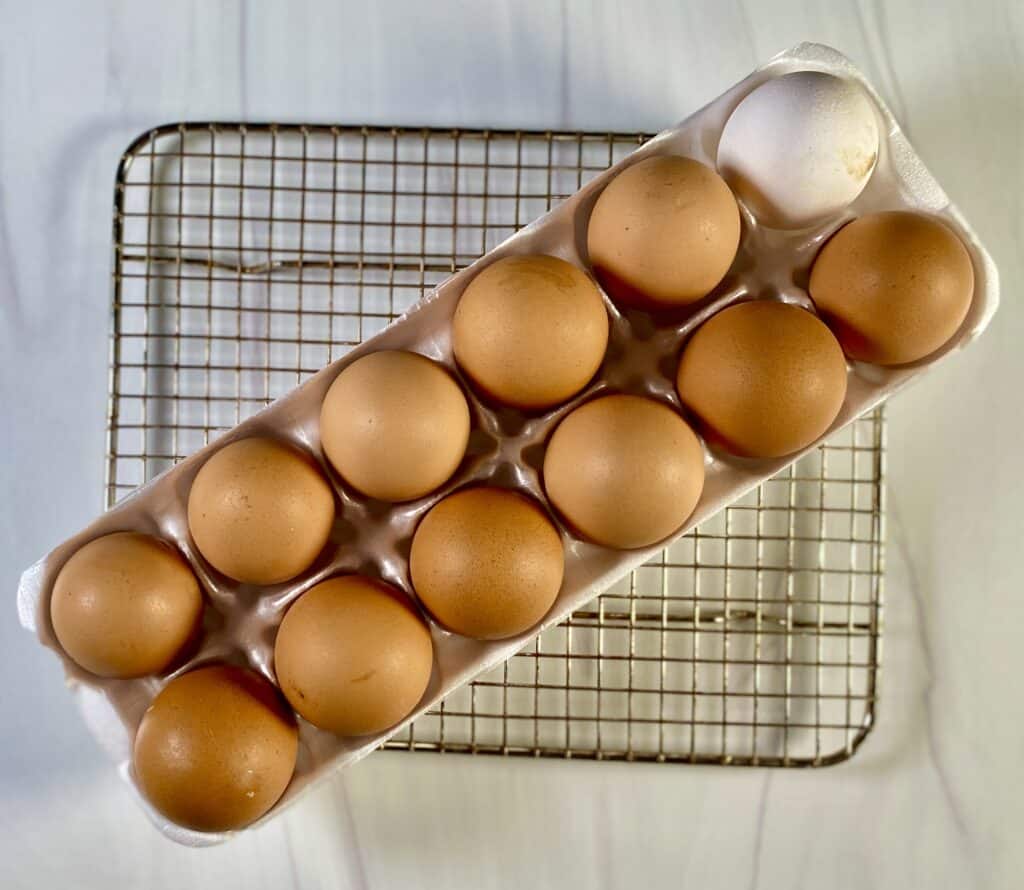
The humble egg doesn’t demand as much attention as its counterparts flour, sugar and butter, but it’s just as important! I hope you enjoyed reading about one of my favorite ingredients, and that this ingredient series is helping to deepen your knowledge about baking so that you too can understand what you’re baking and why it works.
Until next time!
Love the Ingredient Series? Subscribe here for more helpful content!


